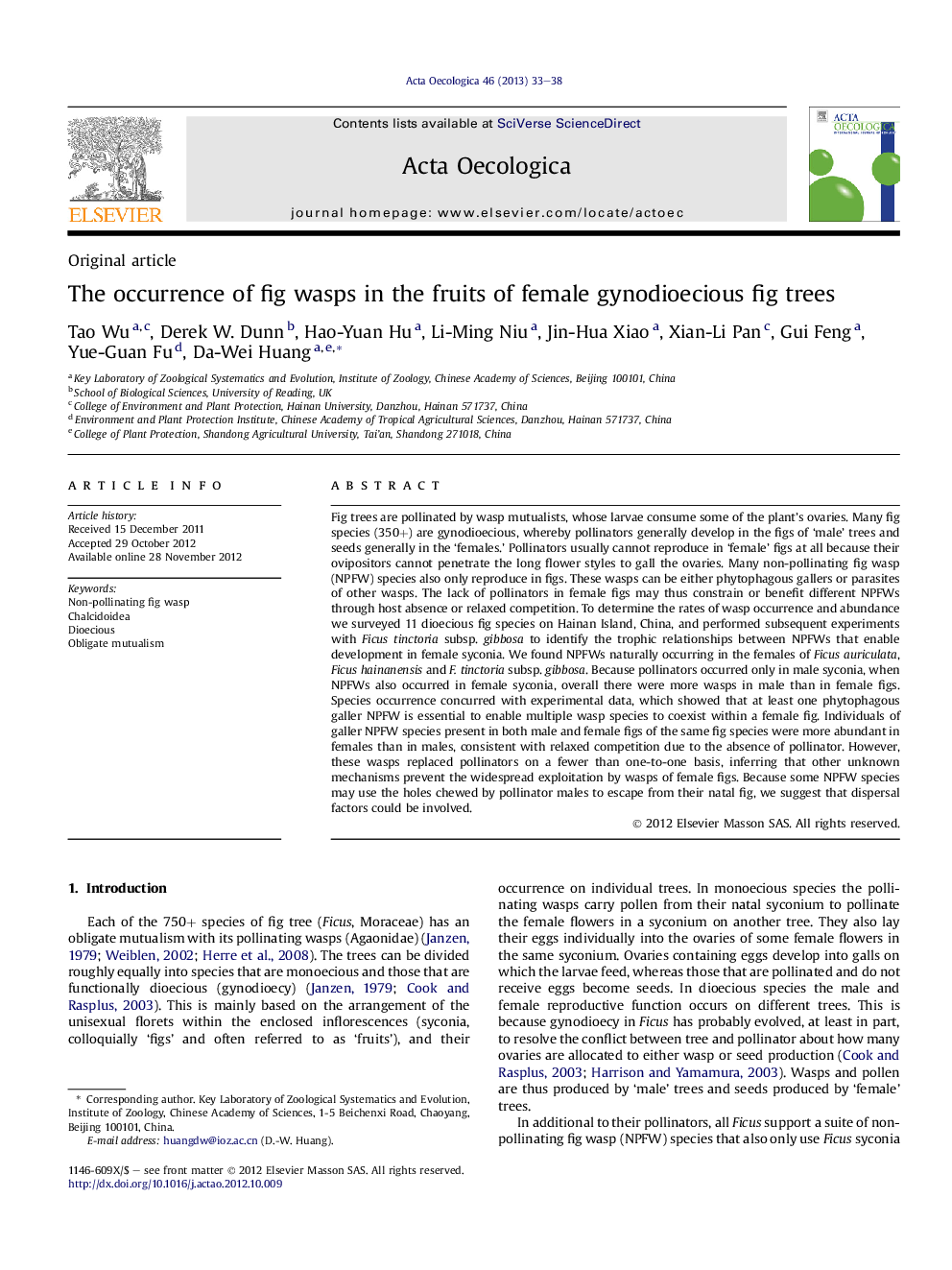| کد مقاله | کد نشریه | سال انتشار | مقاله انگلیسی | نسخه تمام متن |
|---|---|---|---|---|
| 4381149 | 1617725 | 2013 | 6 صفحه PDF | دانلود رایگان |

Fig trees are pollinated by wasp mutualists, whose larvae consume some of the plant's ovaries. Many fig species (350+) are gynodioecious, whereby pollinators generally develop in the figs of ‘male’ trees and seeds generally in the ‘females.’ Pollinators usually cannot reproduce in ‘female’ figs at all because their ovipositors cannot penetrate the long flower styles to gall the ovaries. Many non-pollinating fig wasp (NPFW) species also only reproduce in figs. These wasps can be either phytophagous gallers or parasites of other wasps. The lack of pollinators in female figs may thus constrain or benefit different NPFWs through host absence or relaxed competition. To determine the rates of wasp occurrence and abundance we surveyed 11 dioecious fig species on Hainan Island, China, and performed subsequent experiments with Ficus tinctoria subsp. gibbosa to identify the trophic relationships between NPFWs that enable development in female syconia. We found NPFWs naturally occurring in the females of Ficus auriculata, Ficus hainanensis and F. tinctoria subsp. gibbosa. Because pollinators occurred only in male syconia, when NPFWs also occurred in female syconia, overall there were more wasps in male than in female figs. Species occurrence concurred with experimental data, which showed that at least one phytophagous galler NPFW is essential to enable multiple wasp species to coexist within a female fig. Individuals of galler NPFW species present in both male and female figs of the same fig species were more abundant in females than in males, consistent with relaxed competition due to the absence of pollinator. However, these wasps replaced pollinators on a fewer than one-to-one basis, inferring that other unknown mechanisms prevent the widespread exploitation by wasps of female figs. Because some NPFW species may use the holes chewed by pollinator males to escape from their natal fig, we suggest that dispersal factors could be involved.
► Fig wasps occur in the fruits of female gynodioecious fig trees widely.
► We made a clarification of the trophic level of wasps to exploit female figs.
► The same wasp species can occur in male and female trees of the same fig species.
Journal: Acta Oecologica - Volume 46, January 2013, Pages 33–38